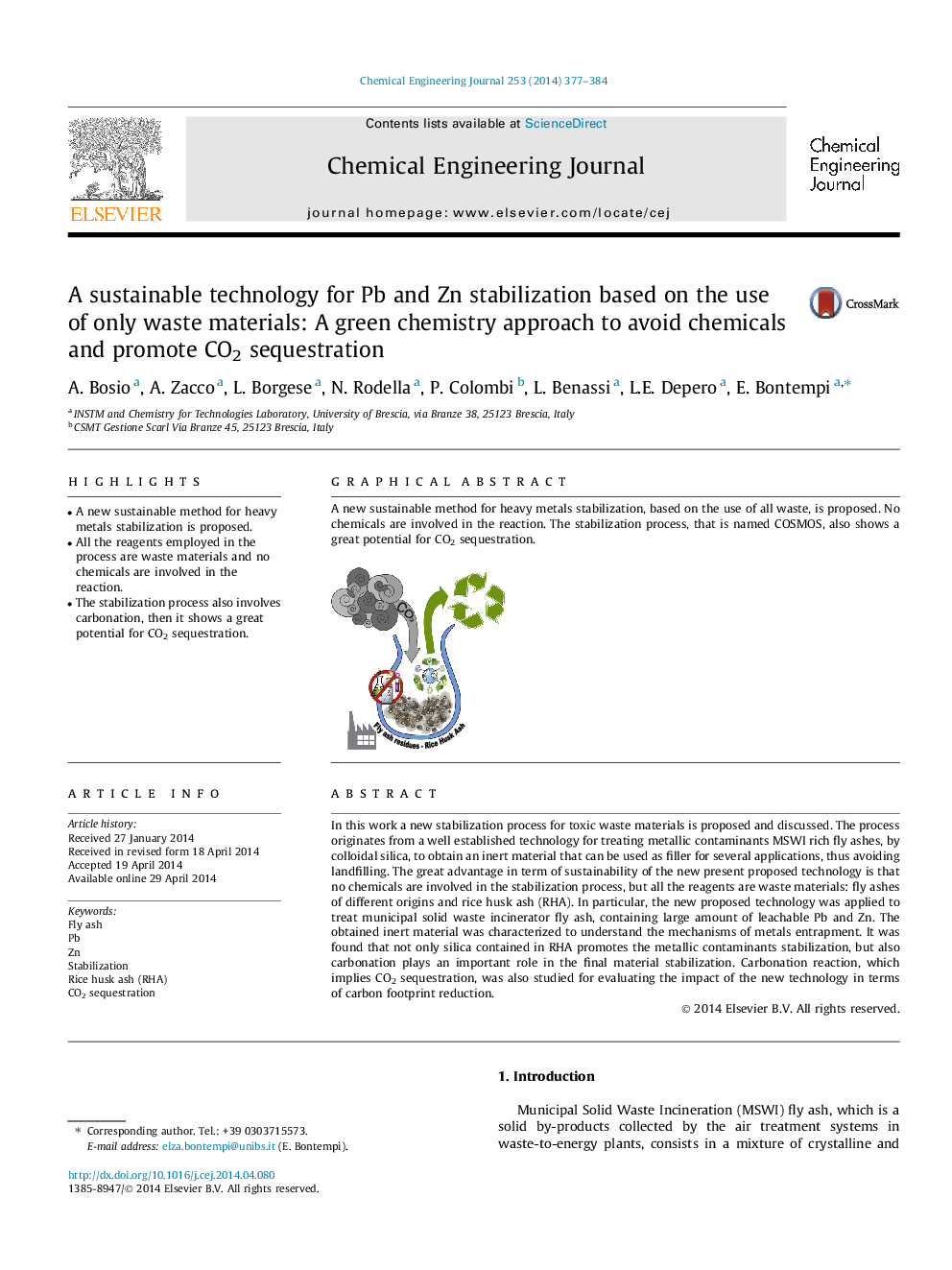| Article ID | Journal | Published Year | Pages | File Type |
|---|---|---|---|---|
| 147197 | Chemical Engineering Journal | 2014 | 8 Pages |
•A new sustainable method for heavy metals stabilization is proposed.•All the reagents employed in the process are waste materials and no chemicals are involved in the reaction.•The stabilization process also involves carbonation, then it shows a great potential for CO2 sequestration.
In this work a new stabilization process for toxic waste materials is proposed and discussed. The process originates from a well established technology for treating metallic contaminants MSWI rich fly ashes, by colloidal silica, to obtain an inert material that can be used as filler for several applications, thus avoiding landfilling. The great advantage in term of sustainability of the new present proposed technology is that no chemicals are involved in the stabilization process, but all the reagents are waste materials: fly ashes of different origins and rice husk ash (RHA). In particular, the new proposed technology was applied to treat municipal solid waste incinerator fly ash, containing large amount of leachable Pb and Zn. The obtained inert material was characterized to understand the mechanisms of metals entrapment. It was found that not only silica contained in RHA promotes the metallic contaminants stabilization, but also carbonation plays an important role in the final material stabilization. Carbonation reaction, which implies CO2 sequestration, was also studied for evaluating the impact of the new technology in terms of carbon footprint reduction.
Graphical abstractA new sustainable method for heavy metals stabilization, based on the use of all waste, is proposed. No chemicals are involved in the reaction. The stabilization process, that is named COSMOS, also shows a great potential for CO2 sequestration.Figure optionsDownload full-size imageDownload as PowerPoint slide
